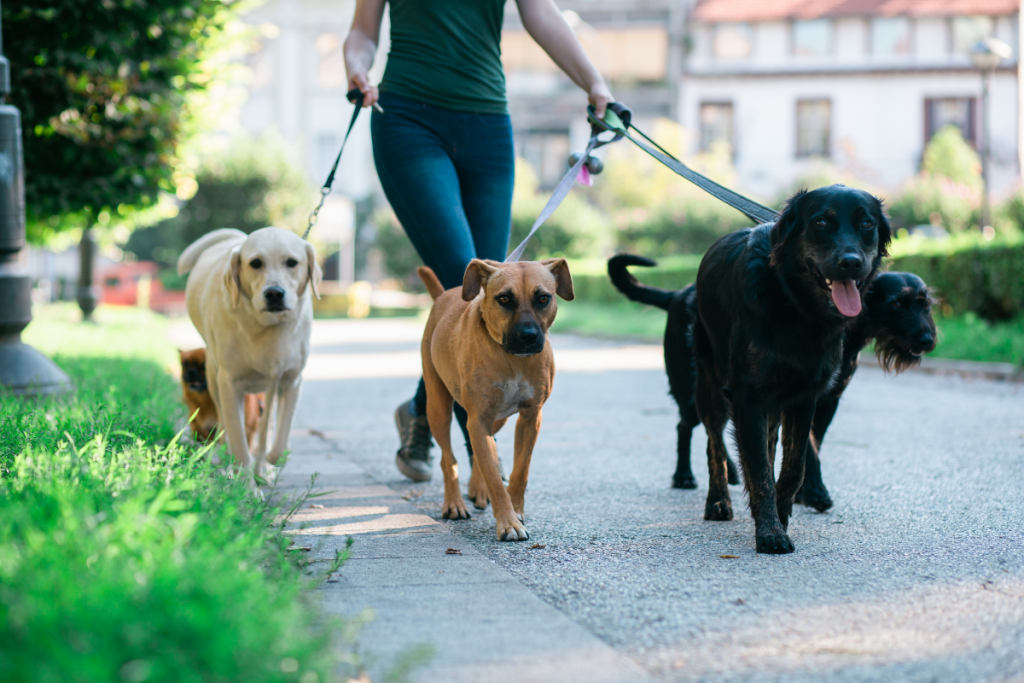
Your Complete Guide To Dog Walking Depending On Breed
Your Complete Guide To Dog Walking Depending On Breed
When we commit to owning a dog, we know that we need to walk them frequently for physical exercise, mental stimulation and socialising. However, what many of us can be unaware of is the fact that the right amount of exercise for your dog is dependant on its breed, age, health and finally, personality.
One of the most important factors that can determine how long you should walk your dog is the breed. There are some dog breeds that are more energetic and excitable than others, and because of this, they will need more frequent and vigorous exercise. Furthermore, there are other breeds that have instinctive preferences for play and exercise that they were purposely bred for.

Dog Breeds And How Long They Should Be Walked Infographic

30 Minutes +
- Bichon Frise
- Yorkshire Terrier
- Miniature Dachshund
- King Charles Spaniel
- Chihuahua
- Maltese
- Papillion
- Pekingese
- Pomeranian
- Miniature Pinscher
One Hour +
- Lhasa Apso
- Shih Tzu
- English Bulldog
- Shetland Sheepdog
- Miniature/Toy Poodle
- Miniature Schnauzer
- Cocker Spaniel
- Cairn Terrier
- Pug
- Whippet
- West Highland Terrier
- Tibetan Terrier
- Dogue de Bordeaux
- Bassett Hound
- Saint Bernard
- Bull Terrier
- Border Terrier
- Staffordshire Bull Terrier
Two Hours +
- Siberian Husky
- Golden Retriever
- Samoyed
- Alaskan Malamute
- Border Collie
- Boxer
- Dalmatian
- English Springer Spaniel
- German Shepherd
- Labrador Retriever
- Weimaraner
Other Factors That You Must Consider
Just like us humans, our dogs need different amounts of exercise at different ages. A typical toddler would struggle with a two-hour walk, therefore you must expect the same from a puppy. Likewise, as dogs grow older, so does their stamina and ability to exercise for long periods, and because of that reason, they may struggle with exercise they were once used too.
Other factors that can influence how long you should walk your dog include the dog’s health and personality. If your four-legged best friend is suffering from some health issues, then they may not be fit for lots of exercise. In this case, it’s best to speak to your vet for advice on how long they should exercise and what is the best way to do so.
Furthermore, there are some dogs out there – just like us humans – that hate the idea of walking! If this is the case, then you need to get creative. Your dog will still need plenty of exercise, so it’s about making the experience fun for them. Why not try playing tug of war, running up and down the stairs, hide and seek or even a classic game of fetch.

Top Tips For Walking Your Dog
🐾Bring water for your dog – If you are planning on taking your dog a walk that’s longer than an hour, make sure you bring plenty of water for them. This is especially important in the warmer seasons when dogs have a more difficult time regulating their body temperature.
🐾Change up your route – Walking the same route can become repetitive and boring after a while, so to keep both yourself and your dog stimulated, try changing up your route every so often!
🐾Pay attention to the weather – When taking your dog a walk outside, it’s always a good idea to take a look at the weather. During warmer months, it’s a good idea to take your dog out in the evening when it tends to be much cooler. Likewise, in winter keep an eye on your dog if there is ice, and make sure to wipe their paws in case they have rock salt on them and are tempting to have a lick!
🐾Ask before approaching other dogs – This tip is extremely important as it can keep both your dog and your dog safe! Not all dogs (or their owners) are friendly, and some may spook easily if you approach too much too fast. Therefore, it’s a good idea to keep a safe distance and ask before proceeding to approach.
🐾Let your dog sniff around – Did you know that a slow stroll with lots of sniffing around can be as refreshing for your dog as a fast run? This is because sniffing around is mentally stimulating for your four-legged friend. So, next time you take your dog out let them venture close by and see what they get up too.
🐾Always carry poo bags – This is rule 101 of dog walking. Your walk outside with your dog is a great opportunity for them to go and do their business, so make sure you come prepared! This is not only the nice neighbourly thing to do, but it also prevents other animals and humans for being harmed by the poo.
🐾Make sure your dog has a collar on – It’s always a good idea to ensure that your dog has some type on identification on them at all times. However, when out walking this is especially important, as the worse could unfortunately happen.
🐾Wear reflective clothing – If you usually walk your dog is the evenings or at night when it is dark, make sure both you and your dog are wearing reflective clothing. You will want traffic and other walkers to clearly see you, and this will help prevent any accidents.
